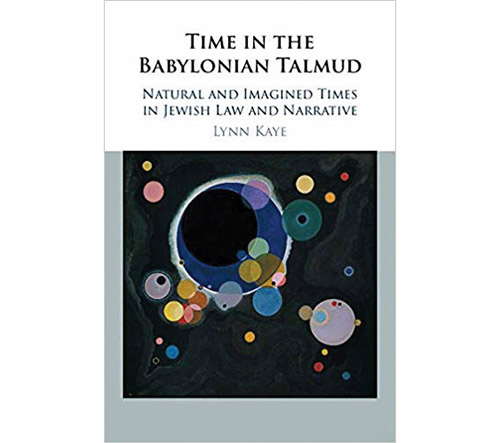
Reviewing: “Time in the Babylonian Talmud: Natural and Imagined Times in Jewish Law and Narrative,” by Lynn Kaye. Cambridge University Press. Hardcover. 2018. English. ISBN-13: 978-1108423236
Getting a true definition of time is not as simple as it may seem. And that supposes time really exists in the first place. None other than Albert Einstein said that “us physicists believe the separation between past, present and future is only an illusion, although a convincing one.” In fact, according to relativity, there really is no such things as now. The best we can do to get to the notion of time is the concept of an observer of simultaneous space in Minkowski spacetime.
In “Time in the Babylonian Talmud: Natural and Imagined Times in Jewish Law and Narrative,” author Lynn Kaye (assistant professor, Department of Near East languages and culture, The Ohio State University) analyzes how the rabbis of the Talmud thought about and dealt with time. Kaye notes that the Babylonian Talmud (Bavli) produces a highly sophisticated and innovative approach to the state of existing within and having a relationship with time.
While there are countless Talmudic discussions dealing with specific time elements (sunrise, sunset, twilight etc.), there are also discussions around the metaphysical aspects of time. The book focuses on the notion of temporal flexibility, and the many uses and aspects of time in the gemara.
In this fascinating monograph, Kaye shows how many of the Bavli texts can contribute to contemporary theoretical examinations of time, and suggests future directions of research, particularly the application of similar methods of analysis to case law and narrative texts in the Mishna.
We today tend to think of time as heavily measured and absolute. Today, one can buy an atomic wall clock for under $30 that is accurate to within a few milliseconds, a level of accuracy that was unheard of until recently. But being so tightly coupled to absolute and highly regulated time has its disadvantages.
When time is fluid, this provides the ability to reconfigure time, which in turn provides the Tannaim and Amoraim with the possibility of satisfying multiple concerns. This study by Kaye shows how studying the nature of time is a fantastic method of understanding how the Tannaim and Amoraim dealt with various issues. And through their use of elasticity of time, they were able to use it to create a legal framework that is relevant 2,000 years later.
The book deals with a few core concepts, the first of which is spatial, temporal and kinesthetic concepts of simultaneity. This is the concept in the Bavli of efshar l’zamtzem, which is the notion that it is possible for natural occurrences to achieve a perfect precision, and people can discern that. There is actually a Talmudic debate if that truly exists. As there are opinions that in fact ei’efshar l’zamtzem—that simultaneity is not possible and people lack the ability to be that exacting in relation to time.
That chapter segues into a variety of opinions as to how accurate a person is likely to be in judging the hour of the day. She writes that sundials were not commonly used in Talmudic times, and that there is little to no evidence in the Bavli of individuals using time-measuring devices to comply with Jewish law. This in turn has the Bavli go with the assumption that people observe time very broadly, and were not expected to mark times of day with precision. This is a fascinating and important topic, and if there is any flaw in this book, it’s that it does not go into greater depth into the topic.
Chapter 4, “Retroactivity Reimagined,” deals with the fascinating topic of bererah, roughly translated as retroactive. Bererah means that certain legal decisions can, under certain limited circumstances, be retroactively applied. Kaye notes that contemporary logicians and philosophers have taken up bererah as a source of novel solutions to problems in temporal logic, and notions of the past and future. When applied broadly, bererah raises many theological and philosophical challenges, as one can question whether the past is truly settled and irrevocable, and if the future is predetermined.
The book focus more on the philosophy of time within the Bavli, but does not get into technical aspects of time measurement and the specific halachic time categories. This is a captivating book on a number of topics that are essential to the crux of Jewish life and philosophy. At 160 pages, it is a good launching point, and Kaye provides plenty of references for additional reading.
While you won’t find a definition of time in In “Time in the Babylonian Talmud,” it does provide a most thought-provoking and insightful view of how the rabbis of the Talmud used and related to time. Their approach was sophisticated, and they were, no pun intended, ahead of their time when it came to these matters.
By Ben Rothke
Ben Rothke lives in New Jersey and works in the information security field. He reviews books on religion, technology and science.










